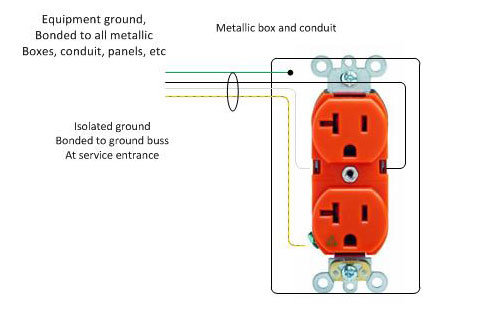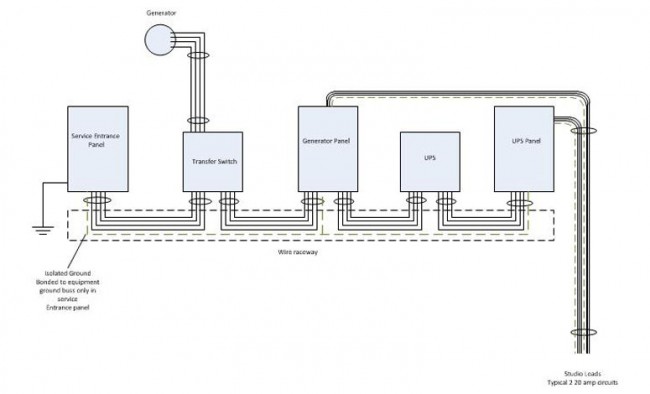We get requests to install Isolated Ground outlets from time to time, especially with sensitive equipment. TELCO likes to have isolated grounds on their fiber MUX’s. It can become an issue with branch circuits in split-phase or three-phase services that share the same ground and neutral conductor. This can lead to a ground loop between neutral and ground, which will create all sorts of havoc in a broadcast facility.

The National Electrical Code covers Isolated Grounds (IG) and sensitive equipment in several sections. The first is section 250.146(D), which states that the installation of isolated ground receptacles is permitted. The grounding conductor connected to such receptacles is permitted to pass through one or more panel boards, boxes, conduit bodies, etc without being bonded to them. However, said panel boards, metallic boxes, conduit bodies, raceway, etc must also be grounded separately. That means running two ground conductors, usually, the isolated ground conductor is green with a yellow stripe or spiral.

The second is section 640.9(A), which refers to separately derived power systems. This section deals specifically with balanced power; 60 volts AC to ground. In such cases, a separate ground conductor is allowed as outlined in section 250.146(D) and in 647.6(B), which states that the grounding buss should be connected to the grounded conductor on the line side of the separately derived systems disconnecting means.
Other sections of the NEC that may apply to broadcast radio and television facilities:
- Article 455, Phase converters (rotary phase converters)
- Article 480, Storage batteries (UPS)
- Article 520, Theaters, Audience Areas of Motion picture and Television studios, Performance areas, and similar locations
- Article 640, Audio signal processing, Amplification and Reproduction Equipment (Audio wiring)
- Article 645, Information Technology Equipment (computer equipment and network wiring)
- Article 647, Sensitive Electronics Equipment (balanced power 60 volts to ground)
- Article 702, Optional Standby systems (generators)
- Article 770, Fiber optic cables
- Article 810, Radio and Television Equipment (antennas, towers, and grounding)
- Article 820, Cable TV (CATV)
- Article 830, Network-powered broadband communications systems (power over ethernet)
If interested, I can do articles on these sections as well.
